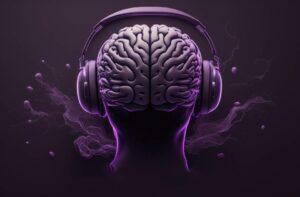A mental image is a representation in one's mind of the physical world outside of oneself. It can involve any of the senses, including sight, hearing, touch, taste, and smell, but it most commonly refers to visual representation.
Mental imagery plays a significant role in memory and learning. When learning new information, creating a mental image of the material can help embed it into memory and improve recall. This is the basis of several memory-enhancing strategies, such as the method of loci.
Moreover, mental imagery is crucial in problem-solving and planning. It allows individuals to envision different scenarios, outcomes, or strategies before implementing them. This ability to 'see' and 'manipulate' objects or situations mentally is integral to various cognitive tasks, from simple ones like navigating a familiar environment to complex ones like designing a new machine or creating a piece of art.
Mental imagery also plays a role in emotions and self-perception. For instance, imagining a peaceful scene can help induce relaxation, while visualising success can boost confidence and motivation.
Mental image
Some techniques that involve mental imagery include:
* Guided imagery: A relaxation technique that involves focusing on calming and positive mental images to reduce stress and promote relaxation.
* Visualisation: The process of creating mental images to represent specific goals, experiences, or outcomes, often used to enhance motivation, focus, and performance.
* Mental rehearsal: Practising a task or skill mentally, by imagining the steps and desired outcome, which can improve performance and build confidence.
* Guided imagery: A relaxation technique that involves focusing on calming and positive mental images to reduce stress and promote relaxation.
* Visualisation: The process of creating mental images to represent specific goals, experiences, or outcomes, often used to enhance motivation, focus, and performance.
* Mental rehearsal: Practising a task or skill mentally, by imagining the steps and desired outcome, which can improve performance and build confidence.
Mental imagery can be used to support mental health and well-being in several ways:
* Stress reduction: Guided imagery and relaxation techniques can help to lower stress levels, promote relaxation, and improve emotional well-being.
* Goal setting and motivation: Visualization can be used to create mental images of desired outcomes, which can enhance motivation, focus, and perseverance in the pursuit of personal and professional goals.
* Emotional regulation: Mental imagery can help individuals process and manage emotions, by imagining positive scenarios or engaging in mental rehearsal to build coping skills and resilience.
* Memory and learning: Mental images can be used to support memory and learning by creating visual representations of information, which can be more easily recalled and understood.
* Stress reduction: Guided imagery and relaxation techniques can help to lower stress levels, promote relaxation, and improve emotional well-being.
* Goal setting and motivation: Visualization can be used to create mental images of desired outcomes, which can enhance motivation, focus, and perseverance in the pursuit of personal and professional goals.
* Emotional regulation: Mental imagery can help individuals process and manage emotions, by imagining positive scenarios or engaging in mental rehearsal to build coping skills and resilience.
* Memory and learning: Mental images can be used to support memory and learning by creating visual representations of information, which can be more easily recalled and understood.
To incorporate mental imagery techniques into your daily routine, consider the following strategies:
* Set aside dedicated time: Schedule regular time each day for relaxation, guided imagery, or visualisation exercises.
* Practice mindfulness: Engage in mindfulness meditation, which can help you become more aware of your mental images and the emotions associated with them.
* Use mental rehearsal: Before engaging in a task or facing a challenging situation, mentally rehearse the steps and desired outcome to improve performance and build confidence.
* Create a relaxing environment: Choose a quiet, comfortable space to practice mental imagery techniques, free from distractions and interruptions.
* Set aside dedicated time: Schedule regular time each day for relaxation, guided imagery, or visualisation exercises.
* Practice mindfulness: Engage in mindfulness meditation, which can help you become more aware of your mental images and the emotions associated with them.
* Use mental rehearsal: Before engaging in a task or facing a challenging situation, mentally rehearse the steps and desired outcome to improve performance and build confidence.
* Create a relaxing environment: Choose a quiet, comfortable space to practice mental imagery techniques, free from distractions and interruptions.
Related Semantic Entities for Mental image






